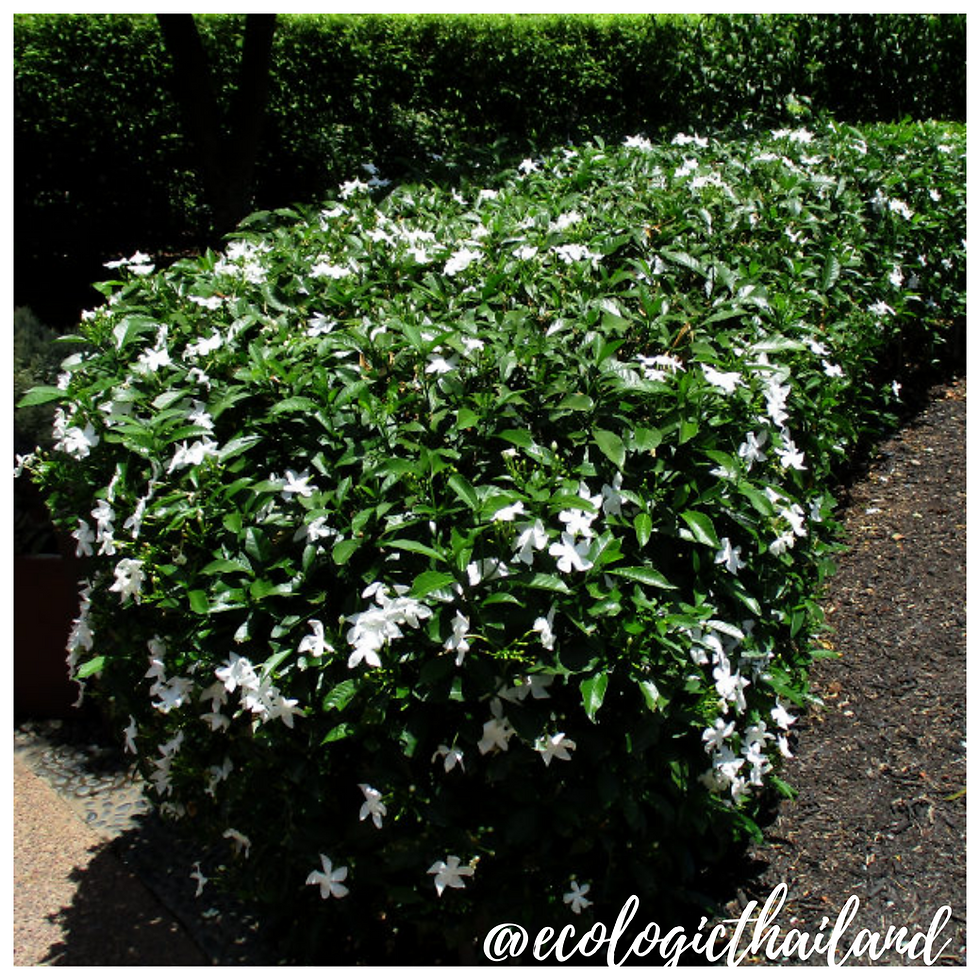Butterfly Pea
- Eco-Logic Resort
- Oct 3, 2020
- 3 min read
Dhok Anchan | ดอกอัญชัน | Clitoria ternatea
Family: Fabaceae - Genus: Clitoria

The vines of the butterfly pea can be found around the restaurant of Eco-Logic Thailand, in the 'soap garden' behind the Special School of TCDF and on different areas on the premises.
The butterfly pea grows as a vine or creeper. The most striking feature about this plant is the color of its flowers, a vivid deep blue; solitary, with light yellow markings. The blue version of the flowers is most common, but there are also vines with white flowers.
The flowers, leaves and young pods are all edible.
The flowers and leaves are also used as a natural colorant. At Eco-Logic Thailand you can drink the teas, eat blue rice or use the blue shampoo, made by the students of the TCDF Special School. All done with the butterfly pea flower!
The butterfly pea flowers constantly, flowers an be harvested when fully open. They can be used right away in the kitchen, or they can be dried for later use.

THE VINE
Butterfly peas are fast growing evergreen perennial, herbaceous, climbing, scrambling or trailing plants,
Butterfly pea plants can reach a height of 2 to 3 meters and a spread of about 1 meter.

THE LEAVES
The leaves, young shoots are edible and the leaves can also be used as a green colorant
Leaves can be used in salads and for frying in Thailand.
The leaves are elliptic, and are 1.5 to 3 cm long.

THE FLOWERS
The blue version of the flowers is most common, but there are also vines with white flowers.
The flowers are about 4 centimeter long by 3 centimeter wide.
The flowers are edible and are used in many culinary and medical uses.
Flowers are also often used to color food and drink.
Thai people also use the flower for hair and skin care

THE PODS
The fruit of the butterfly pea plant are 5 to 7 cm long flat pods with six to ten seeds in each pod.
Young pods can be eaten as a vegetable when tender.
CULINARY USES OF BUTTERFLY PEA
The flowers, leaves, young shoots and tender pods are all edible.
The flowers make a wonderful tea that has a calming effect. This tea also has antioxidant properties and thus boosts body immunity.
In Thailand the flowers are used to color rice, sweets and desserts
Flowers are also dipped in batter and fried.
Leaves are used in salad and for frying in Thailand.
Young pods are edible and eaten as vegetable.
Click on the link of the Food Forest Kitchen Restaurant to find recipes using the butterfly pea flower.
NUTRITION
Blue butterfly pea flower is caffeine-free. Also, it is loaded with antioxidants, vitamin A, C and E.
TRADITIONAL MEDICINAL USE OF BUTTERFLY PEA
NOTE: please take advice from a doctor if you are planning to use herbal medicine.
Butterfly pea is used in many ways in traditional Ayurvedic medicine and is said to be effective with:
increasing blood flow to the capillaries of the eyes, useful in treatment of glaucoma, blurred vision, retinal damage or tired eyes.
memory enhancing,
anti-stress,
antidepressant,
anticonvulsant,
tranquilizing and sedative properties.
affecting female libido
antimicrobial,
anti-inflammatory,
analgesic, diuretic,
local anesthetic, antidiabetic,
insecticidal,
blood platelet aggregation-inhibiting
and for use as a vascular smooth muscle relaxing properties.
INTO THE WILD: a down to earth experience

For guests and visitors to Paksong we organize weekly tours "The Edible Forest" and Foraging weekends: Into the Wild. We work with local guides to take you in the jungle of Paksong. After foraging, we will cook a meal with the ingredients, using bamboo together with you!
Come and join and learn about the abundance of food that nature gives us!
INTO THE WILD!


















Comments